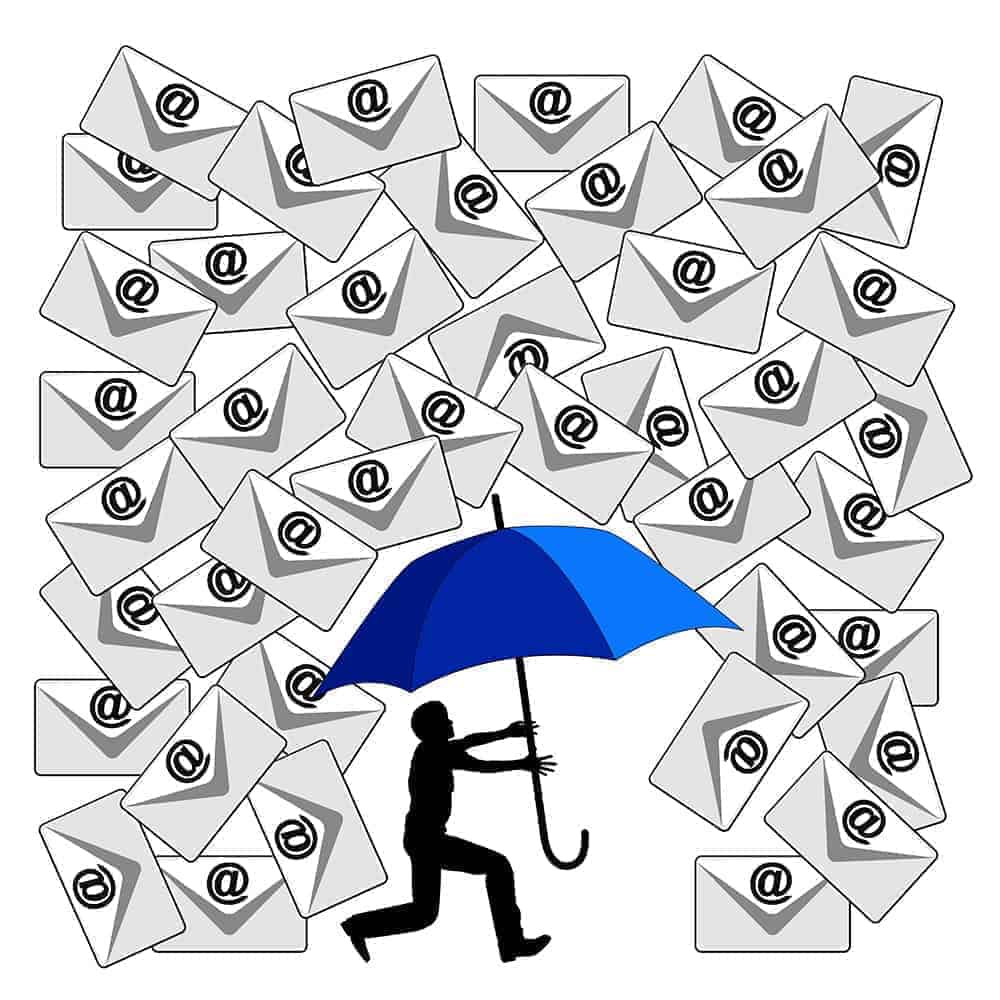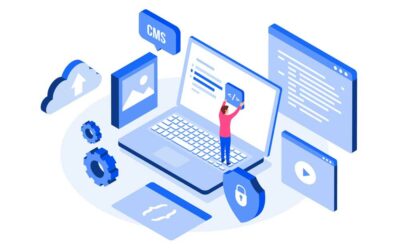Communication is one of the most important areas of business. Missed correspondences can often lead to missed opportunities. A slow response time may also leave an unfavorable impression on your level of professionalism. This is why reading and responding to emails are part of our daily routine. In the digital age, email has become the primary medium of communication.
However, as important as email is, it can severely impact your productivity. According to a study by McKinsey Global Institute (MGI), people spend 28% of their time during the workweek managing emails. In a standard 48- hour workweek, that is 13 hours or 2 hours per workday spent on the Inbox.
What can you do in 2 hours?
Let’s reference the study on “The Ultradian Rhythm” which disclosed that our brains can focus on a task for no more than 90 minutes to 120 minutes before requiring a 20 to 30- minute break or rest period. This means, 2 hours can give you enough time to accomplish one, and even possibly, two essential tasks.
7 Ways You Can Make Time Spent With Email More Productive
Despite email’s implications on business, it remains first and foremost, an administrative task. In other words, a non-essential task. If you spend too much time managing non-essential tasks, your day will become non-productive.
Is there a way to manage email effectively that it does not compromise your level of productivity?
Not just a way. How about 7 ways?
1. Create Different Email Accounts
The Inbox of your business email can be flooded with hundreds of messages on a given day. However, which of these messages are relevant to your business? How many messages are in response to a current need or concern?
If you took the time to filter through them, you may find out that a significant majority are not relevant to your business.
Some may be correspondences from family, friends, or are simply marketing content. Worse, you may come across a good number of suspicious email.
Creating different email accounts is an effective strategy for improving productivity.
First, you will have to establish the purpose of each email account. For example, in addition to your business email, create one that will be the destination point of correspondences from friends, family, and associates who are not connected to your business.
You may also consider creating emails for specific areas of your business. For example, hr@xyzcompany would be used for recruitment. Another one would be info@xyzcompany for those who want to learn more about your products and services.
Lastly, be more judicious when giving out your business email address. Do not give your primary email out when signing up for newsletters. You can create another one such as rd@xyzcompany.
2. Customize the Settings of Your Email According to Preferences
How proficient are you with the features of your email client? They have features that allow you to customize its settings according to your personal preferences. You can program your email client to move, organize, sort, and flag the messages in the Inbox.
You can also create specific lists for your email. For example, you can inform the email client of contacts that should be prioritized. Likewise, you can let the email client know of addresses and contacts you want to be blocked. In your “blacklist”, you should include people who are notorious for spamming activities.
There are email clients that enable you to create filters so you can sort out your Inbox automatically. This will save you the time in scrutinizing which emails to attend to first.
Another approach is to create specific folders to categorize and store the email you receive. For example, if you are managing multiple clients, you can create a folder for each of them.
When you receive an email, briefly scan the content then transfer it to the designated folder. It will be easier to find the email and go over it thoroughly when you finally have the time.
3. Include Email Filtering as a Break Time Activity
In our article, “Top 7 Tips For Productivity”, we included a section on the use of focus blocks. A focus block is a period of time that has been dedicated to the accomplishment of a specific task.
It is based on the Ultradian Rhythm theory, whereby you should set aside 90 to 120 minutes of 100%, uninterrupted focus on the accomplishment of the task. Once the task has been completed, you should “reward” yourself with a 20 to 30 minute rest period or break time.
You can use the break time to eat, take a nap, or attend to any non-essential task. It would be a good idea to use the 20 to 30 minute break time to filter your Inbox. This way, email management will not intrude upon the time that has been set aside for productive activity.
Let’s assume that in an 8- hour workday, you have established a total of four 90- minute focus blocks. By using the 20- minute break time windows to check email, then total time spent managing the inbox would only be 80 minutes or 1 hour and 20 minutes.
If we reference the MGI study which showed people spend 2 hours per day checking email, then by using focus blocks, you can save 40 minutes per day. You can use the time savings to attend to other tasks.
It will not matter if you allocate the 40 minutes to non-essential tasks as the time saved came from your rest periods, not from productive hours.
4. Shut Off All Email Notifications
Notifications are great reminders but they can be a distraction when they pop up frequently. Not only will the email notification briefly take your mind off the task you are working on, but it may compel you to check and issue an immediate response.
Don’t just shut off email notifications on your PC desktop. Include your mobile phone too. While you’re at it, turn off all notifications coming from your other applications that are often. These apps normally include Skype, Slack, and Viber.
Like we discussed in the previous section, it would be more productive to read your emails during your 20-minute break time. You can also use your break time to check on your messages from the other apps.
5. Maximize Mobile
If you are one of the 80% of people who open their mobile phones first thing in the morning even before brushing their teeth, put the habit into good use by checking your email right away.
Mobile phones make it easier and faster to access your Inbox. Why is this so important? A study by Roy Baumeister revealed that your ability to make rational decisions declines throughout the day. Your capacity to process information may be at its strongest early in the morning.
What does this mean if you think you are not a “morning person”?
You don’t have to respond to an email right away. However, reading it first thing in the morning may allow you to process it more effectively because your mental faculties are still opening up.
Perhaps you will be in a better frame of mind to compose the appropriate response after 2 cups of your favorite coffee!
Another way you can use mobile to maximize productivity is to catch up on your emails while you are commuting to work. Spend your time at the train, the bus, or in the taxi going over your email. You can use the commute to categorize messages, send out reminders or quick responses, and to clear out your Inbox.
6. Don’t Read It?… Unsubscribe!
We have all subscribed to newsletters. For some time, we found the content relevant and useful in our business. However, its relevance could diminish over the years. Eventually, these newsletters will just accumulate and continually flood our Inbox with unwanted content.
If you have subscribed to content that you no longer read, then there is no more valid reason to grant the sender access to your Inbox. The best recourse is to unsubscribe to their mailing list.
If you have not been able to track all the newsletters you have subscribed to, use an app called unroll.me. This app will give you a summary of all the services you have subscribed to. You will have the option to unsubscribe from each service or to put all of them under one message.
7. Keep Your Responses Short and Concise
Email remains one of the most popular forms of communication because you can send quick messages in real time. When crafting a response or original content, it is good practice to keep its length short and concise.
Like you, the recipient of your email may also be facing the challenge of filtering out his/her Inbox. The recipient may have his/her own set of practices that allow email checking to become part of a productive day. Chances are, the recipient of your email will not have the time to go through a long email.
Is there an ideal length for an email? Yes, there is actual research which determined the ideal length of an email that gets the highest response rate from its recipient. According to the study, emails that have a word count of 75 words to 100 words received the highest response rate at 51%. The response rate at 50 words and 125 words is identical at 50%. However, there is a noticeable drop in the response rates when the word count was lower than 50 and greater than 125. What does 100 words look like? This paragraph is 100 words long!
Conclusion
Email is an inescapable reality of everyday life. You will rarely find a day where your Inbox has been zeroed out. For some people, clearing out the Inbox is like a game. They have to be able to clean out their messages at the end of the day.
This is why email presents a conundrum. It is a necessity; email is an important component of a business. Yet, it is also one of the leading causes of stress in the workplace!
A study conducted by Professor Tom Jackson from Loughborough University revealed that 92% of people get stressed out after receiving and reading an email in the workplace.
Thus, it would be advisable to spend as little time filtering email as possible. Another option would be to outsource email management to a qualified third-party service provider.
Bestselling author and productivity advocate, Tim Ferris, found his moment of clarity when he hired virtual assistants to manage his email and other non-essential tasks.
How about you? Do have you have any productivity tips on email management that we did not take up? Kindly share in the comments section below.







